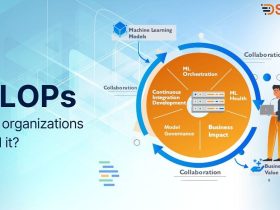Today’s sensor-based revolution transforms robots from automated machines to cognitive collaborators. They have become an important link on a dynamic continuum that includes humans, other machines, and the digital environment in which they operate.
The potential benefits of collaborating with sensor-controlled human robots are enormous. Examples range from protecting workers and increasing productivity to stimulating new sources of income through innovation and more.
The collaborative environment that automation suites provide includes multiple actors and a lot of data which together can present some significant challenges. Fortunately, they can be solved using the same technology that enables a continuum of automation. These challenges include:
What is Robotics?
Robots have been used in manufacturing for years. They are a staple of the manufacturing industry. But they aren’t just for large-scale production. In fact, the commercial robotics industry is also growing in size.
You may not be aware, but it’s a $20 billion industry. That’s why it’s so important that industrial automation solutions and automation engineers are able to work together. So what exactly does that mean?
Well, it means we’ll be able to integrate industrial robots seamlessly into the automation system. As your assembly line needs more production, you can quickly add a robot to add to the current setup. As your production demands decrease, you can turn your industrial automation off. Or as demand increases, you can turn on a robot.
The Benefits of Robotics
- Flexibility
- Precision
- Consistency
- Labor Reduction
- Workplace Safety
- High Productivity
The Future of Robotics
Robots are transforming the way we do business. They’ve changed manufacturing and distribution, healthcare, distribution, aerospace, defense, and education.
There are three main robotic categories.
Manually controlled, fully automatic, and collaborative robots.
These types of robots work together to accomplish a task by moving freely together without needing human interaction. Robots can be programmed and programmed easily. It takes about 20 minutes to program a mobile robot, and about a week to program an industrial robot. Programming can be done in a variety of ways. You can write code, use a pre-made script, or use an app.
Conclusion
Robotics: Saves you time, money, and space.
The use of industrial robots and automation in the manufacturing industry has grown exponentially in recent years. Since improving production efficiency, safety and quality assurance are the company’s primary interests, it is not surprising that significant investment and use of robotics continues to be made in production facilities around the world. While some may see robotic automation as a potential threat, the reality is that the benefits of industrial robot automation when combined with employees can be increased and help manufacturers achieve their production goals more efficiently.











